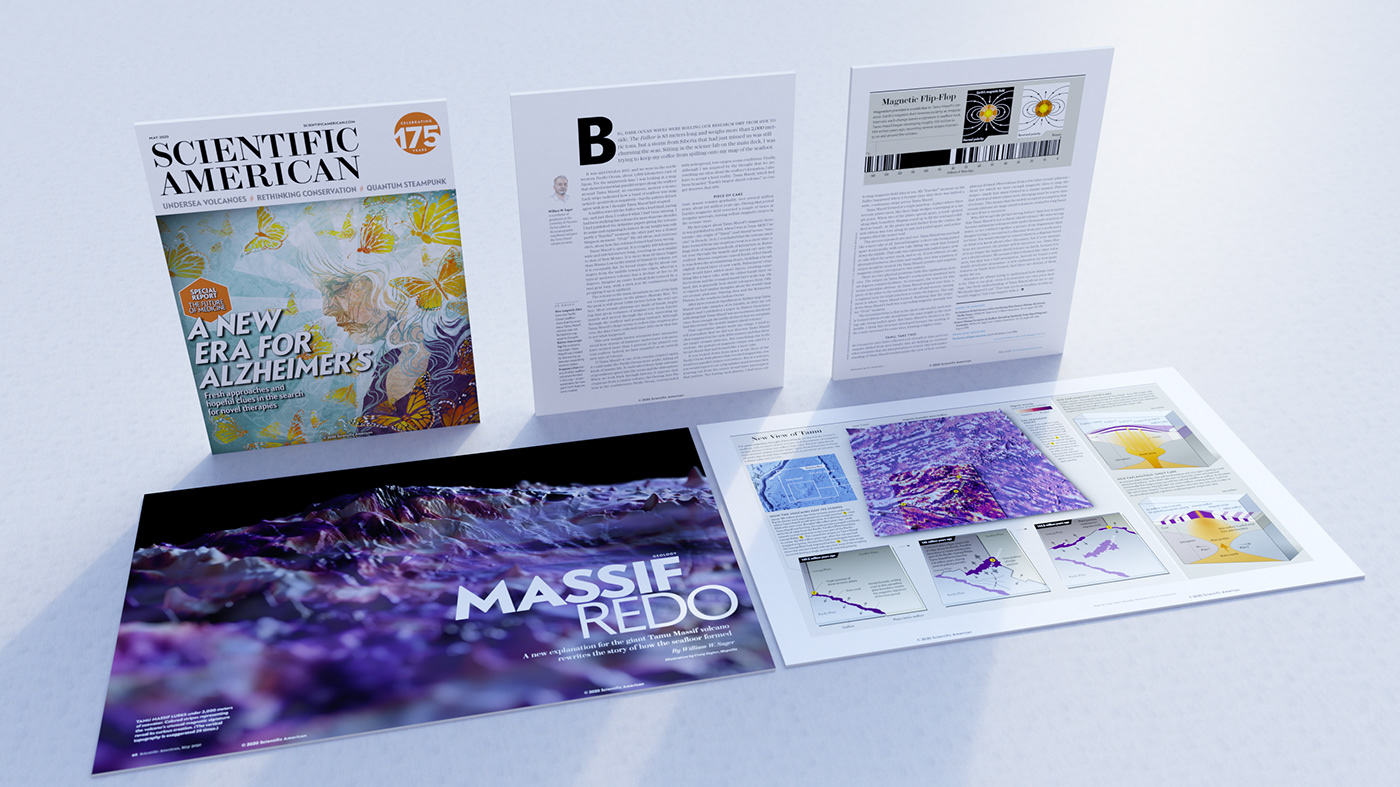
This project for Scientific American was an amazing project to work on and it was incredible to see my artwork in their May 2020 edition.
The visualisation looks at the undersea volcano Tamu Massif with a view of the ocean floor in the Tamu Massif region. The model had to evoke a moody underwater landscape.
Tamu Massif is a huge volcano but the seafloor is not overly dramatic. It’s a gradual slope over a long distance and as such I needed to play into the vertical exaggeration to help make the change in height more visible.
I also used magnetic anomaly data as an overlay for the images to help create a richer sense of the information in play. So the bathymetric data informed the topography of the model and the magnetic data informed the colour.


The end result hit all the notes of a moody underwater landscape whilst being informative, however there were a lot of different variations which we played around with before we got the above imagery. I thought it would be fun to look back at these.

I began with experimenting with abstract shapes for the magnetic anomaly data. The attached above image shows the two opposite values for the magnetic anomaly shown as spherical cloners which I thought would be a nice idea and could grab attention however it looked a little too confusing for the reader so was quickly discarded.

What followed was a series of iterations around lighting, camera positions and textures. There were some interesting concepts I explored here, one of which was the surface water. I liked the idea of having pools of water at the base of the mountain but it ultimately confused the concept of the whole range being underwater so we decided to remove this.
The next set of iterations looked in more detail at varying FOV tests, more gradient colour schemes along with improved lighting. I also looked at colour synergy with the various models and how the inset maps would look.
I always find producing these mood board/concept documents fun and really helps to drill down to what the client likes than just banking on one specific image/direction.
I always find producing these mood board/concept documents fun and really helps to drill down to what the client likes than just banking on one specific image/direction.
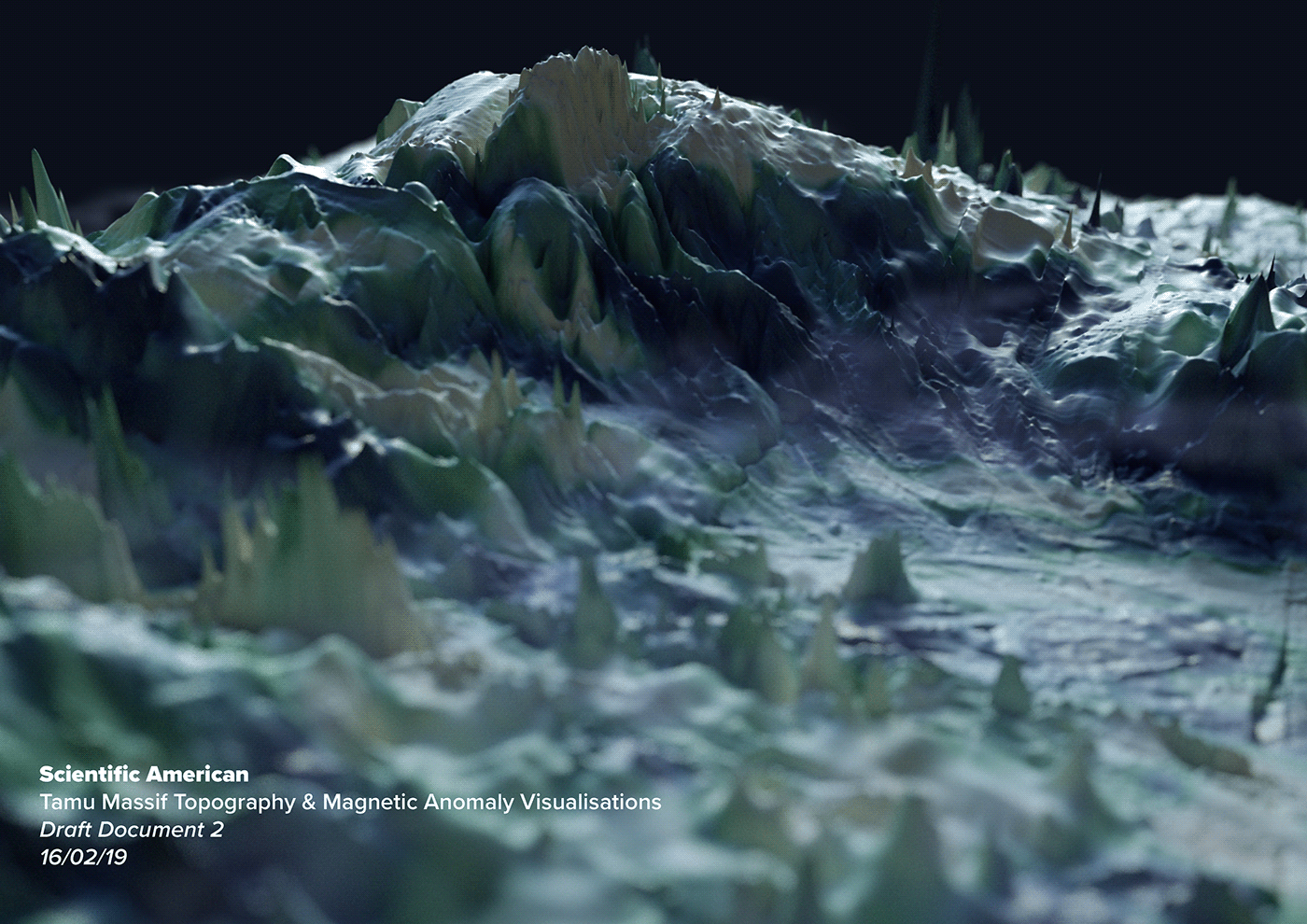

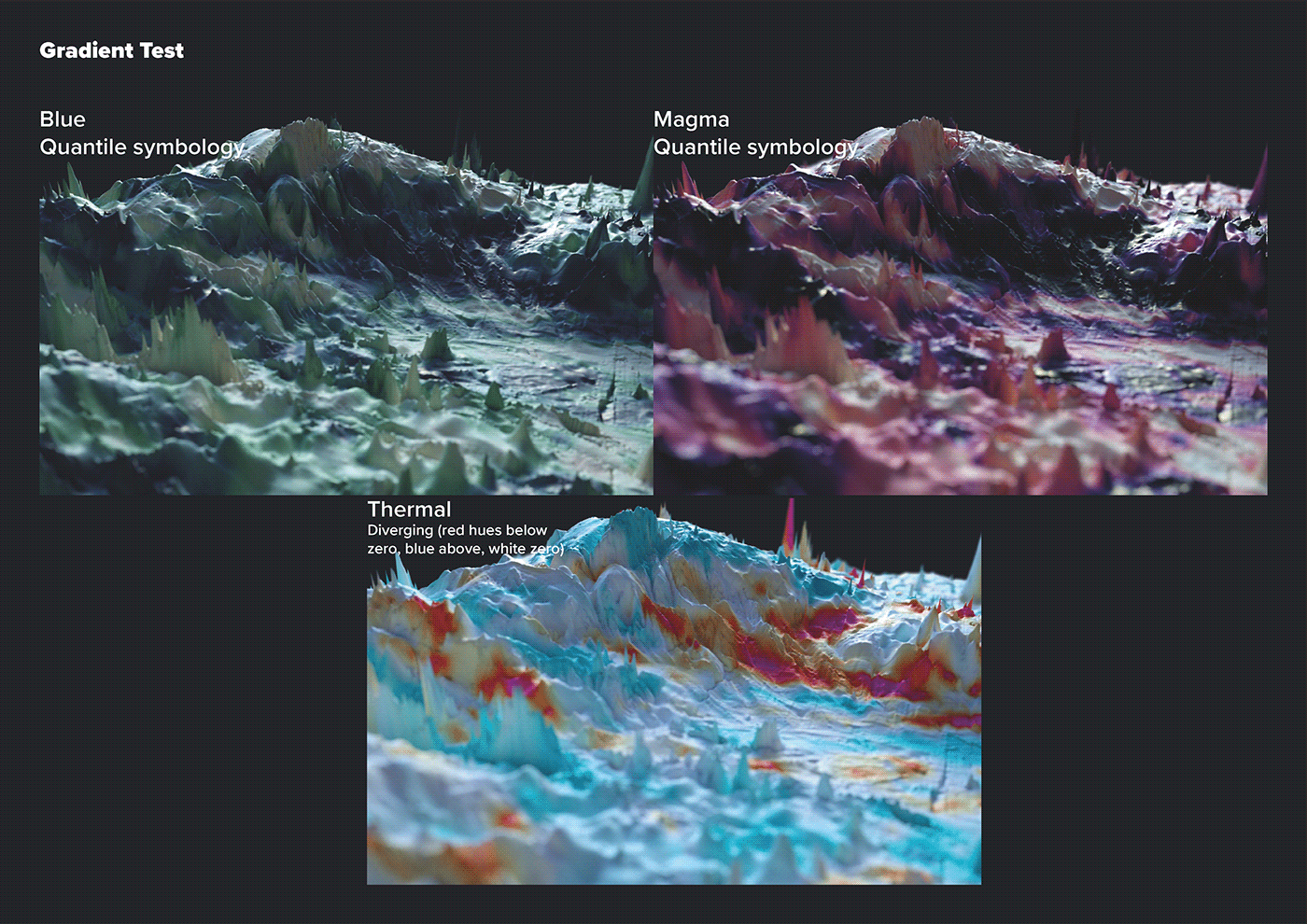



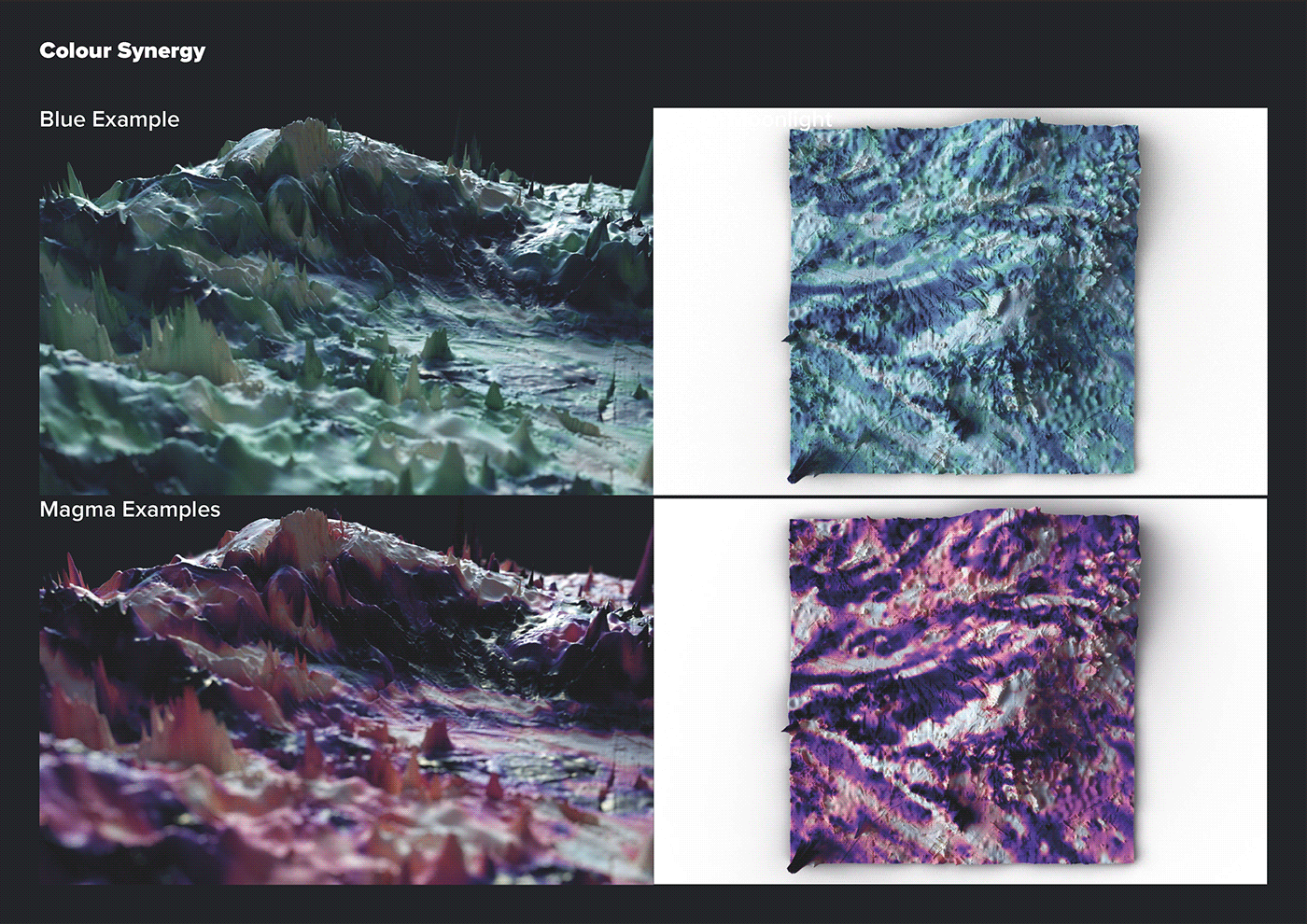




Ultimately we decided to go with the 'magma' colour gradient and a few more tweaks and adjustments and we were almost there. The top down image was slightly challenging as we only had high-res bathymetric data for the volcano region and not the wider region in general. As such I decided to produce a kind of stepped image with the high-res topography elevated slightly above the remaining topography. This created a better understanding of where the volcano was whilst being able to deal with the two varying bathymetry datasets.
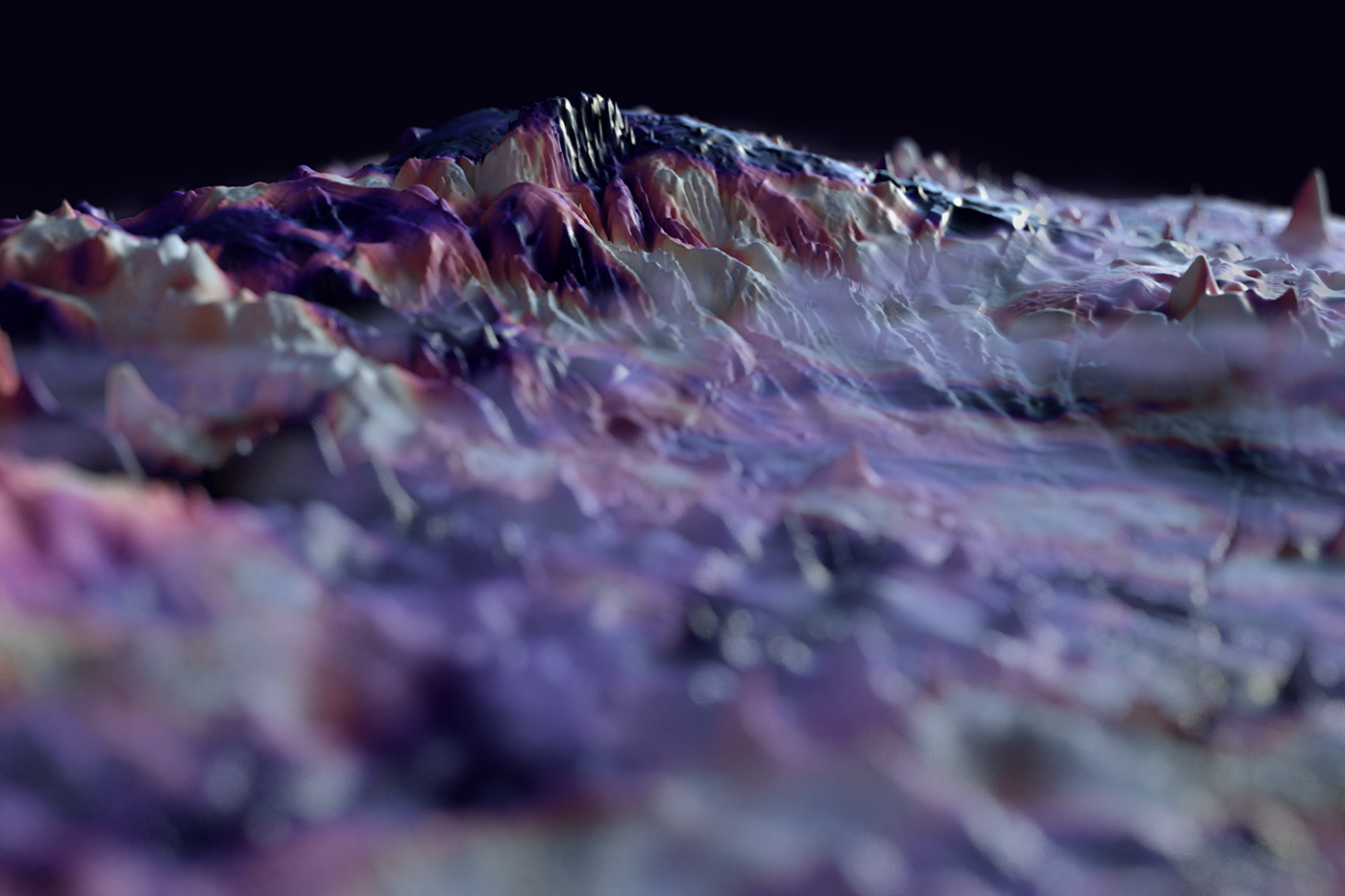

Seeing the imagery in print in such an amazing magazine was an incredible feeling and I was lucky enough that the Japanese version of the magazine wanted to use the imagery for the front cover too which was awesome to see.



